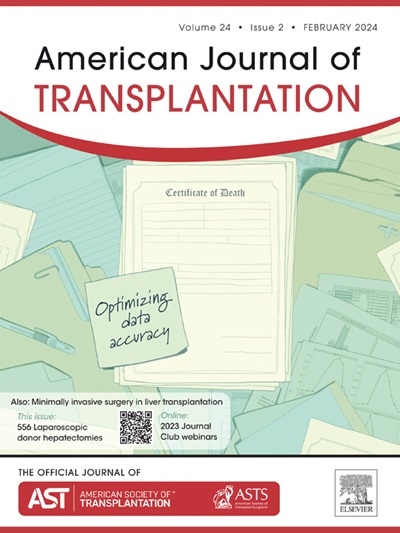The relationship between cessation of brain and systemic circulation after withdrawal of life-sustaining measures
IF 8.2
2区 医学
Q1 SURGERY
引用次数: 0
Abstract
In donation after circulatory death, it is assumed that cessation of brain activity and brain blood flow occur close to the time of circulatory arrest. However, this assumption lacks direct empirical data that would support current death determination guidelines, ensure donor safety, and maintain public trust. We conducted a single-center prospective observational study of adult patients undergoing controlled withdrawal of life-sustaining measures. We measured systemic circulation using an indwelling arterial cannula and assessed brain blood flow with transcranial Doppler. In a subset of patients, we also recorded brain electrical activity using electroencephalography. Our results demonstrate that brain blood flow consistently stopped before or simultaneously with systemic circulation (median, −179 seconds; range, −458 to 0 seconds; P = .016) and at a higher mean arterial pressure (median, 30 mm Hg; range, 24-36 mm Hg; P = .003) and pulse pressure (median, 13 mm Hg; range, 0-24 mm Hg; P = .006). Among patients with both transcranial Doppler and electroencephalography data, brain activity generally stopped after brain blood flow but before circulatory arrest. These findings support current death determination guidelines, strengthening confidence in donor safety protocols and reinforcing public trust in organ donation.
停止维持生命措施后脑停止与体循环的关系。
在循环死亡后的捐赠中,假定脑活动和脑血流量的停止发生在接近循环停止的时间。然而,这一假设缺乏直接的经验数据来支持当前的死亡确定指南,确保捐赠者的安全,并维持公众的信任。我们进行了一项单中心前瞻性观察研究,研究对象是接受控制停用维持生命措施的成年患者。我们使用留置动脉插管测量体循环,并使用经颅多普勒(TCD)评估脑血流。在一部分患者中,我们还使用脑电图(EEG)记录了脑电活动。我们的研究结果表明,脑血流在体循环之前或同时停止(中位数= -179秒,范围= -458秒至0秒,p = 0.016),并且在较高的平均动脉压(中位数= 30 mmHg,范围= 24-36 mmHg, p = 0.003)和脉压(中位数= 13 mmHg,范围= 0-24 mmHg, p = 0.006)。在同时有TCD和EEG数据的患者中,脑活动通常在脑血流后停止,但在循环停止之前停止。这些发现支持了目前的死亡确定指南,增强了对捐赠者安全协议的信心,增强了公众对器官捐赠的信任。
本文章由计算机程序翻译,如有差异,请以英文原文为准。
求助全文
约1分钟内获得全文
求助全文
来源期刊
CiteScore
18.70
自引率
4.50%
发文量
346
审稿时长
26 days
期刊介绍:
The American Journal of Transplantation is a leading journal in the field of transplantation. It serves as a forum for debate and reassessment, an agent of change, and a major platform for promoting understanding, improving results, and advancing science. Published monthly, it provides an essential resource for researchers and clinicians worldwide.
The journal publishes original articles, case reports, invited reviews, letters to the editor, critical reviews, news features, consensus documents, and guidelines over 12 issues a year. It covers all major subject areas in transplantation, including thoracic (heart, lung), abdominal (kidney, liver, pancreas, islets), tissue and stem cell transplantation, organ and tissue donation and preservation, tissue injury, repair, inflammation, and aging, histocompatibility, drugs and pharmacology, graft survival, and prevention of graft dysfunction and failure. It also explores ethical and social issues in the field.

 求助内容:
求助内容: 应助结果提醒方式:
应助结果提醒方式:


